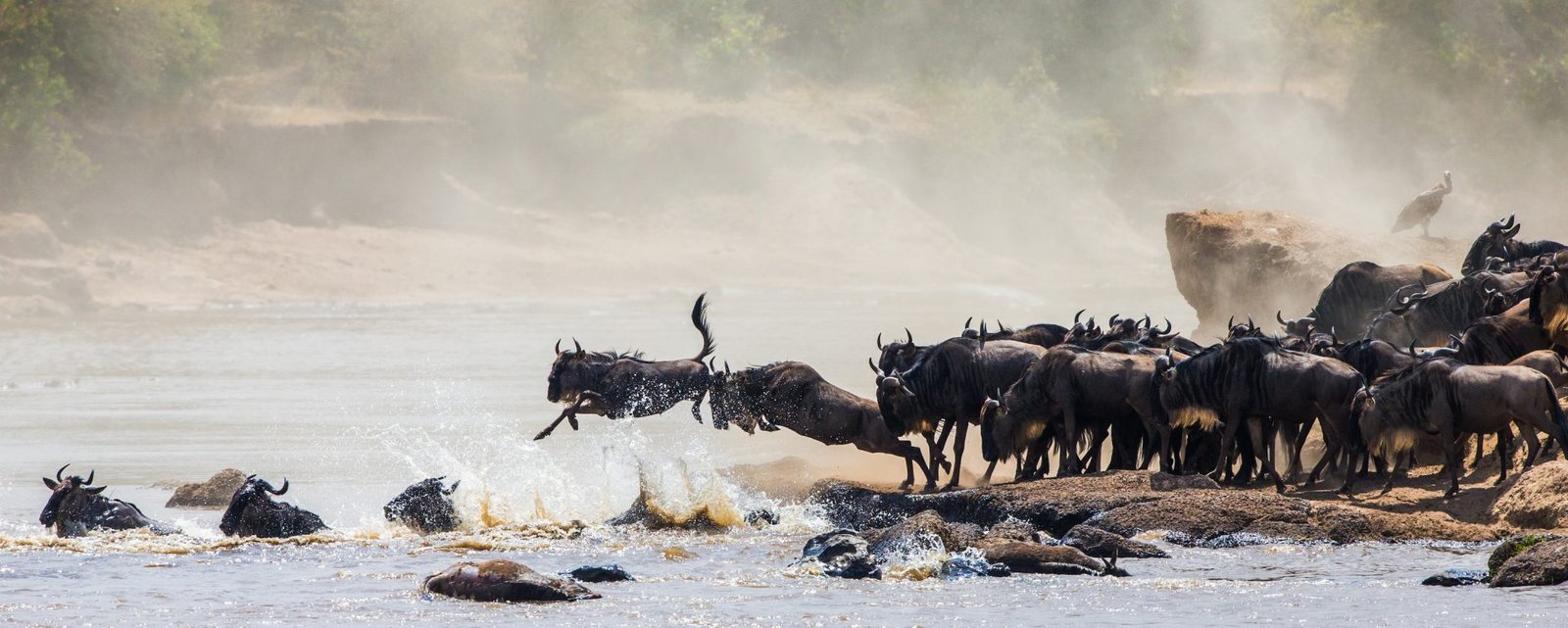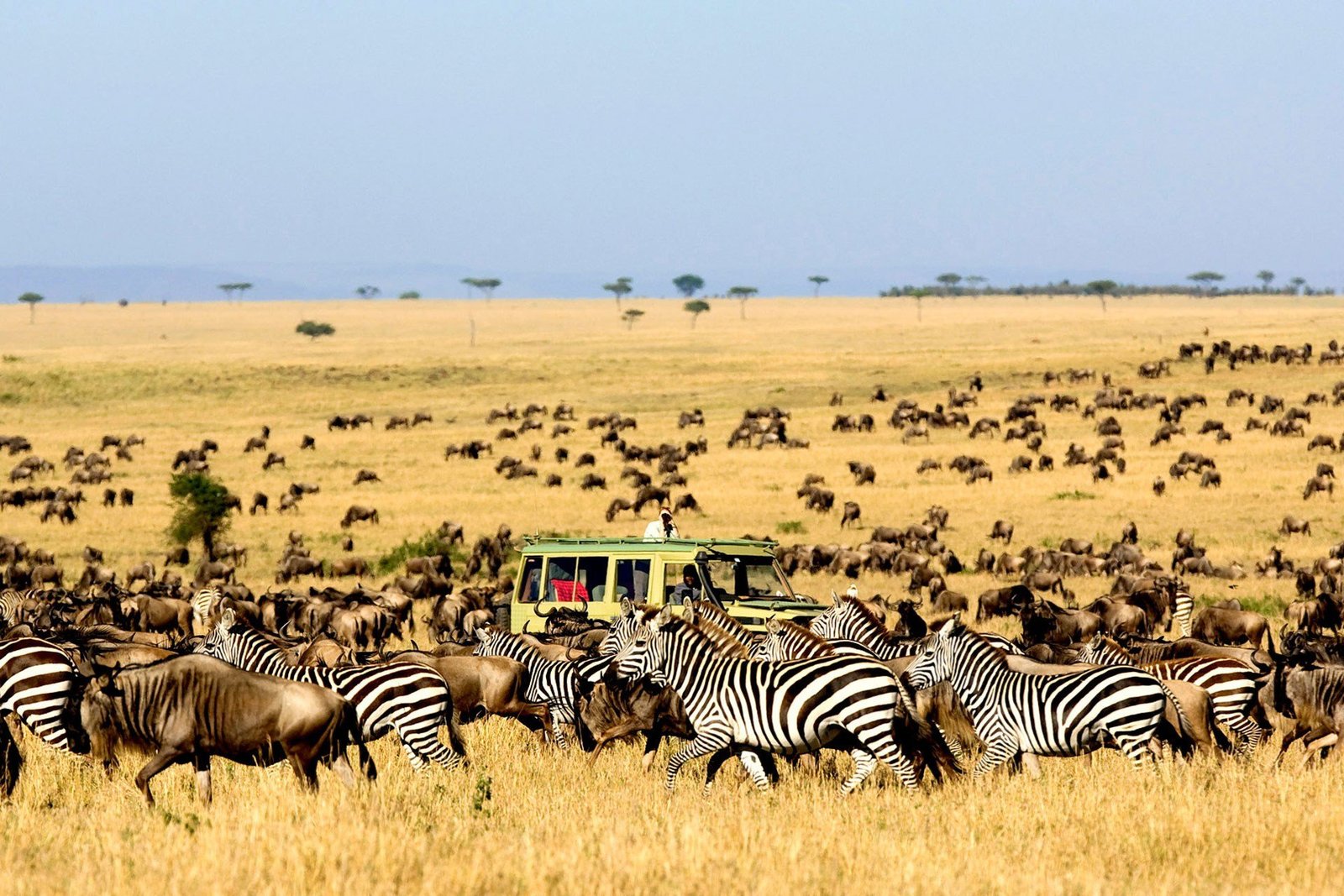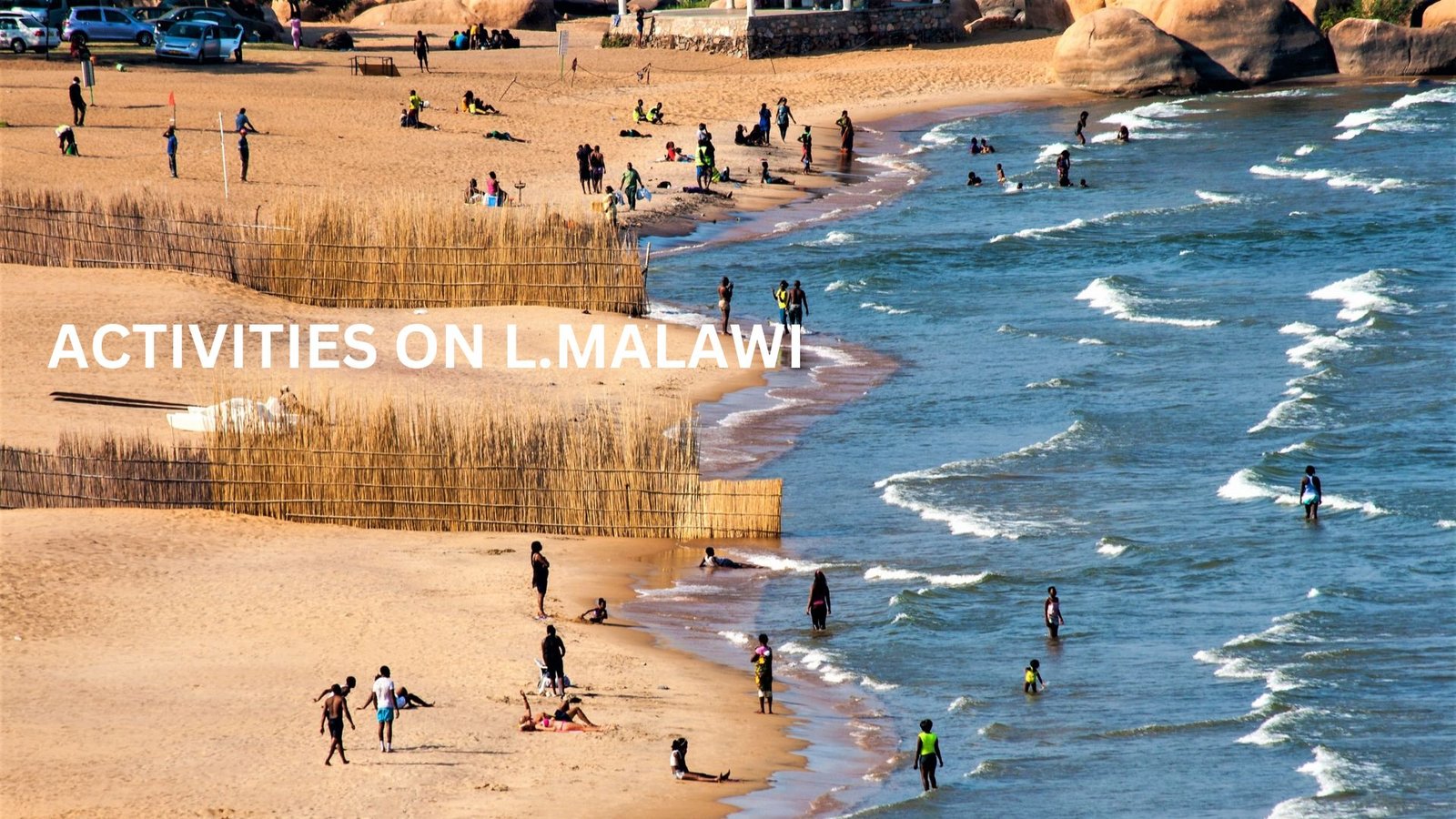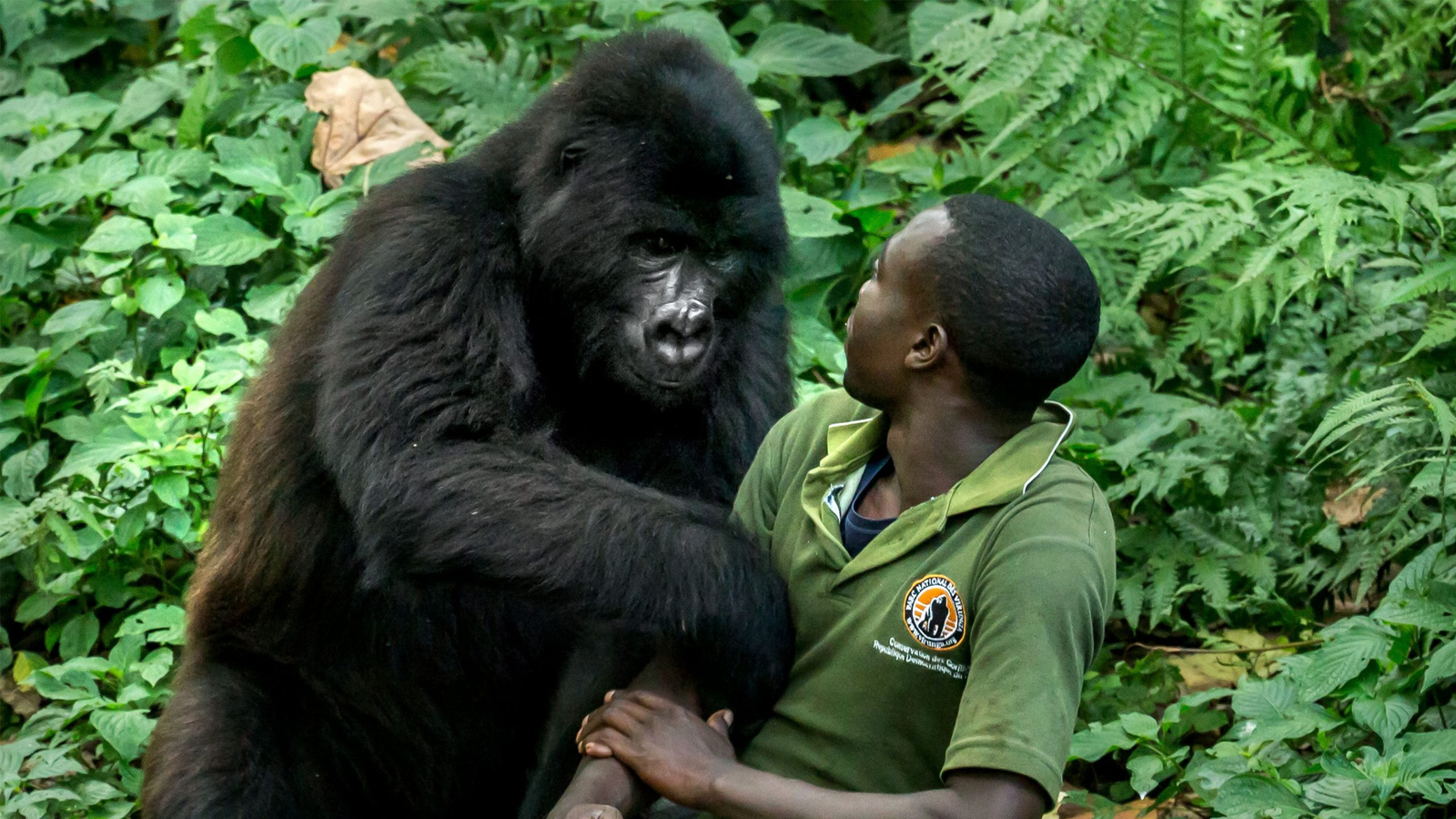Great Wildebeest Migration in Tanzania and Kenya : Tanzania’s Great Migration in Serengeti is the largest annual movement of large numbers of wildebeests, Grant’s Zebras, Thomson’s gazelle, elands and the impala. Over two million wildebeests, zebras and gazelles move through the Serengeti and Masaai Mara ecosystems in search of green pastures and fresh water in a nearly regular pattern. These wildebeests move in large numbers throughout the year from the Serengeti in Tanzania to Masaai Mara Game Reserve in Kenya.
Wildebeests traverse through a large eco-system that includes Tanzania’s Serengeti and Kenya’s Masaai Mara. During their movement, features like the Grumeti and Mara rivers, Simiti and Lobo hills hinder their smooth movement but they always man oeuvre around and go through them. Wildebeests are usually in Tanzania for the most time of the year. For about 10 months, they are in Tanzania and spend the other three months in Kenya. Therefore when choosing where to see the wildebeest, beware of when to choose a Tanzania safari or Kenya safari respectively.
The Great Migration is influenced by seasonal rains and the availability of grazing grass. It happens all year round and has specific locations for the different times of the year. Travelers can therefore decide to visit during the best time for Tanzania Wildlife Safaris or when they are interested in a specific occurrence.
Process of Wildebeest Migration in the different months
January, February, and March
Around the start of the year, the animals are finishing the southward trek moving from Serengeti to Ngorongoro Conservation Area with lush green grass. This period is also known as the birthing season (over 5000 calves are born every day) and the conditions are good for raising newborns. During this period, there several predator encounters since the newborns are seen as targets.
April and May
Around April, large numbers of wildebeests, zebras, antelopes and gazelles move northwest to central Serengeti and by May, they start to convene at the Moru Kopjes. The end of May is the mating season and this goes on as the movement continues into the Serengeti western corridor. Here herds have to cross the Grumeti River in order to continue with the journey with a threat from the Grumeti river crocodiles.
June and July
June is a dry season and large numbers can be seen in Western Serengeti and the Southern banks of Grumeti River. As July approaches, they move north towards Mara River, North of Serengeti. Seeing millions of wildebeests, zebras, gazelles and antelopes crossing the river is the most magnificent sight. The ones that cross the river are seen in Masaai Mara later in July.

August, September, and October
Close to August, the herds are stretched out in the northern part of Masaai Mara after crossing the Mara River. There are no sightings of a single crossing, only a few animals and a mass of animals moving continuously without a break for a while. By September – October they would have steadily moved eastward.
November and December
Early November and late October, the wildebeests move from Kenya into Eastern Serengeti, and by December, they all over the Eastern and Southern parts.
The cycle continues the next year with lush vegetation and rain.
If you’re planning to follow the migration of the wildebeest from Serengeti national park to Maasai Mara Game Reserve, mobile camps can be arranged for you for accommodation and dinner to make your plan of viewing the migration of the wildebeest easy. If you are planning a safari to East Africa, contact Jewel Safaris via our Email; info@jewelsafaris.com, and all your safari plans will be brought to life.
Some of the itineraries that might interest you to do wildebeest migration are:




